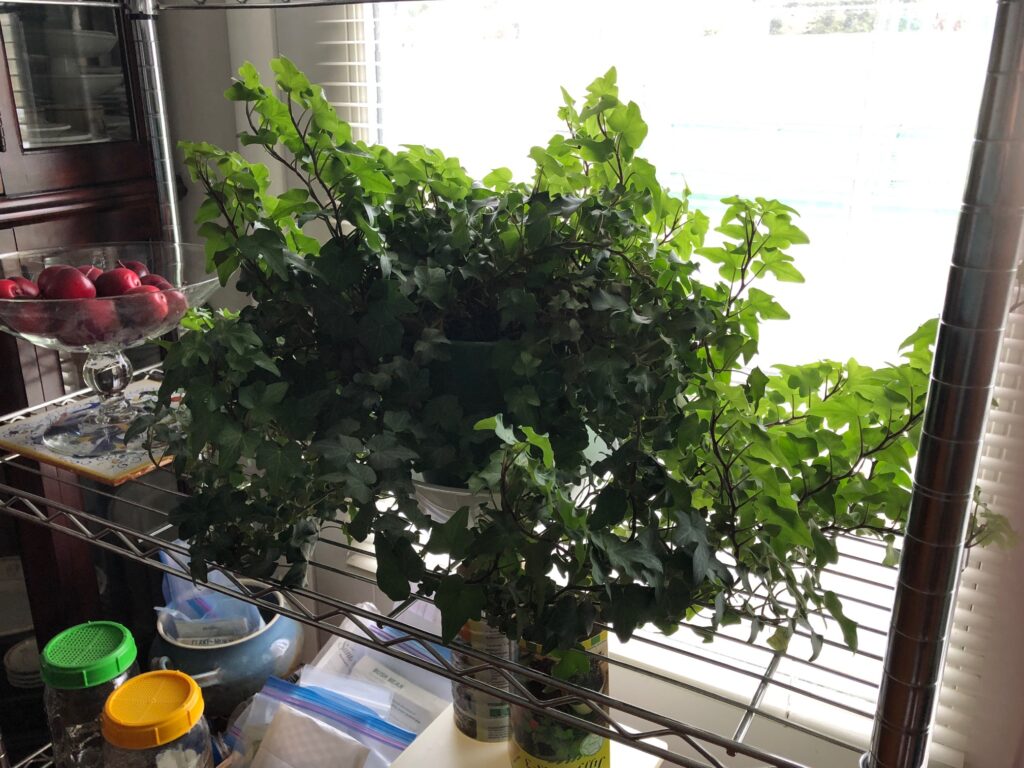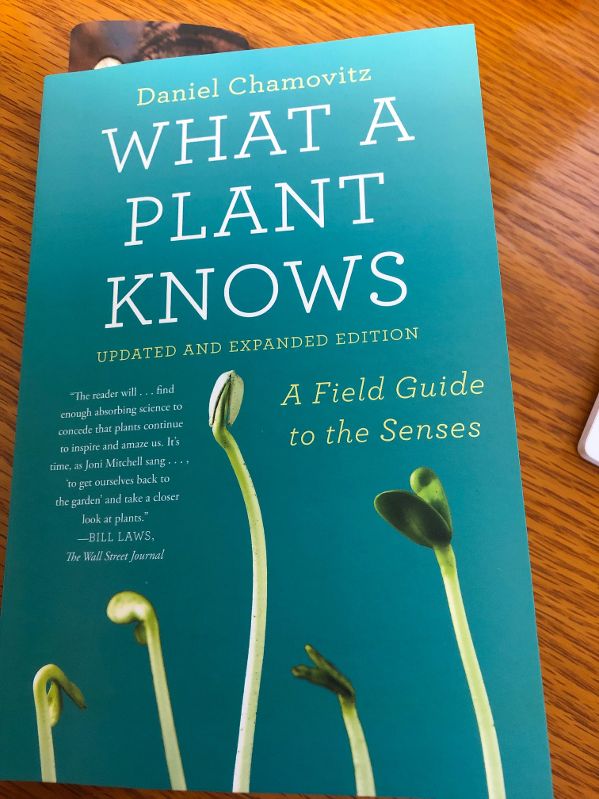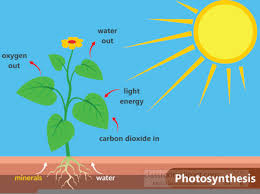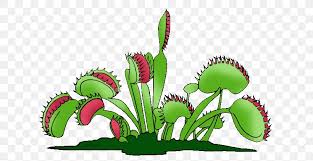With another few inches of snow swirling around outside (again) I thought it was time to finally get my questions answered about what my house plants are thinking under my care. If I can figure out how to take care of them maybe I’ll be a better steward of my garden this spring. My normal care falls under the description of “benign neglect.” I know, pretty sad! Amazingly, I dump water on them when I notice they look wilted; Bert gives them Miracle Grow now and then. Beyond that, when the vines start to take over all the space around them I resort to my scissors and give them a haircut.


I just finished the book, What a Plant Knows: A Field Guide to the Senses, by Daniel Chamovitz (c) 2012, 2017. Mr. Chamovitz has used terminology normally used to reference human senses, such as sight, smell, taste, touch and hearing, and poses the questions, What does a plant see, smell, taste, feel and hear? From the beginning he suggests that while plants respond to stimuli like light and sound, there is no evidence at this time to think plants respond with subjective emotions and fear and sadness.
That’s very reassuring! My plants are not sad if I forget to water them and are not afraid when I whip out the scissors to trim an errant vine. Such a relief!
So what do plants sense? The definitions of the senses have been modified appropriately to reflect that plants do not have a thinking brain and cannot move about like animals.
What do plants see?
While plants do not “see” in pictures, like animals, they respond to ultraviolet light which signals it is daytime. This allows them to use light to turn water and carbon dioxide into sugars (photosynthesis).

Plants respond to blue light (daytime), know which direction it is coming from and its intensity. If the plant is shaded, it will attempt to grow around the shade to get to the more intense sunlight. The red light (usually seen at dawn) is a signal to wake up; the far-red light (usually the last light seen at sundown) is a signal to turn off growth. The length of day/night is determined by the number of hours of darkness. Knowing this, growers can manipulate the length of day and night to force some plants to flower (like chrysanthemums) or turn red (like poinsettias).
What do plants smell?
How about the sense of “smell?” According to Chamovitz, plants can respond to an attack by beetles by releasing chemicals. This volatile chemical in the air will be converted by surrounding plants into a physiological response to deter the attacking beetles.
What do plants taste?
Plants obviously don’t have a mouth, so what about the sense of “taste?” Plants distinguish different soluble chemicals through its roots. Plants may make their own sugars (photosynthesis) but they are totally dependent on outside sources for essential minerals. Plants regulate how much they absorb and regulate their water intake to balance the minerals.
What do plants feel?
Plants perceive touch, or mechanical stimulation, but not pain. If a bug is eating a leaf, the plant will send an electrical signal to produce a defense hormone. A strong wind will encourage a plant to strengthen its stem to better cope with the wind. Setting seedlings outside in the spring breeze helps them grow a sturdier stem.

Plants like the Venus Fly Trap will “feel” a bug touching the tiny hairs on the leaves, causing the leaves to close and trap the bug. It takes a certain sequence of touching a certain number of hairs for this to happen so the plant can close at the right time on the right size bug. Amazing!
What does a plant hear?
Can a plant detect sounds without ears? Do plants prefer classical music or rock and roll? Sound is basically pressure waves. Apparently plants are deaf to particular music, but will respond to the touch of the vibrations. So, you might as well listen to the music you like!

According to Chamovitz, it is still being determined if plants respond to the sense of water, or the sound of running water (like a leaking pipe underground). Are they sensitive to the sound of buzzing bees (hearing), or the vibrations from the bees (touch). More study is needed!
How does a plant know where it is?
Plants somehow know that roots grow down (gravitropism) and leaves grow up toward the light (phototropism). This was studied by Darwin years ago and experimented with in the weightlessness of space. No matter how a seed is planted, this principle was maintained. In space it was just a slower process. Imagine that!
What does a plant remember?
There are three kinds of memory: procedural memory (how to do things); semantic memory (memory of concepts, like in school); and episodic memory (dependent on “self-awareness” of the individual). Plants are capable of sensing and reacting to external stimulation…procedural memory. The other two types of memory are what defines us as human beings. (Chamovitz, p. 137)
The Venus Fly Trap seems to remember if a bug touches a hair; if a second hair is touched (within about 20 seconds) indicating the right size bug, the Trap will shut.
Some researchers suggest plants will “remember” the cold snap and will, over generations, begin to flower later in the spring.
So how does all this information help me take better care of my plants and my garden?
The first thing I did was trim my vine! I did not worry about touching the plant and turning it toward the light (might stimulate growth!). I didn’t worry about what music I listened to…if I liked it, good enough. Finally, I will not worry that I’m hurting its feelings!

If you’d like to chat about this article, post a comment or send me an email marykisner@comcast.net. Enjoy your plants!
